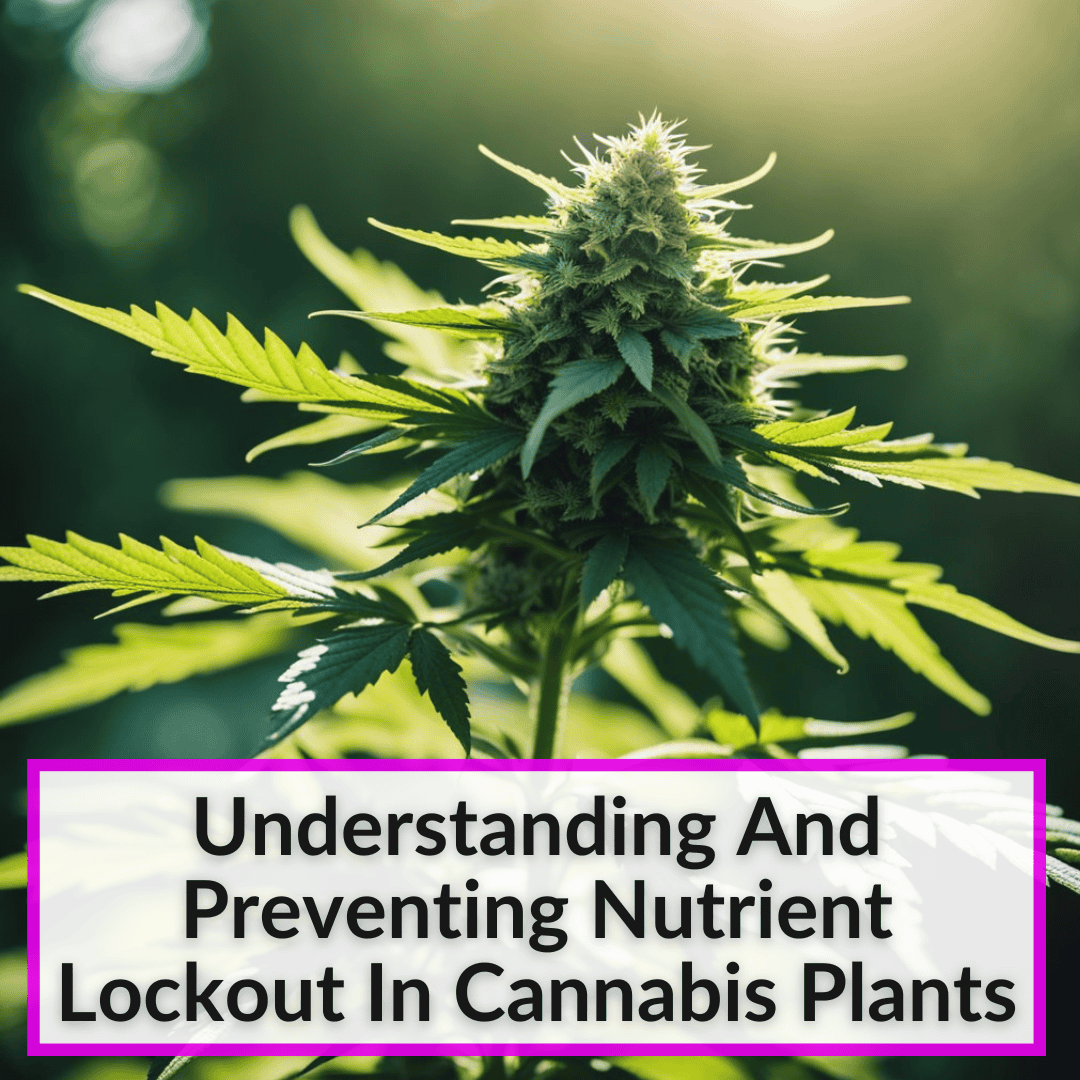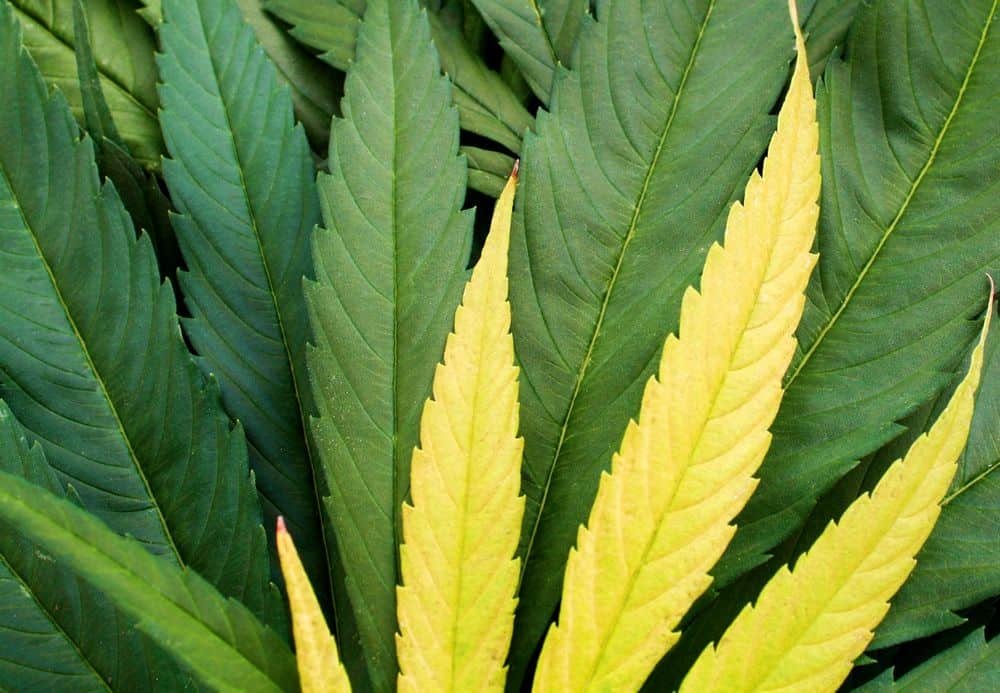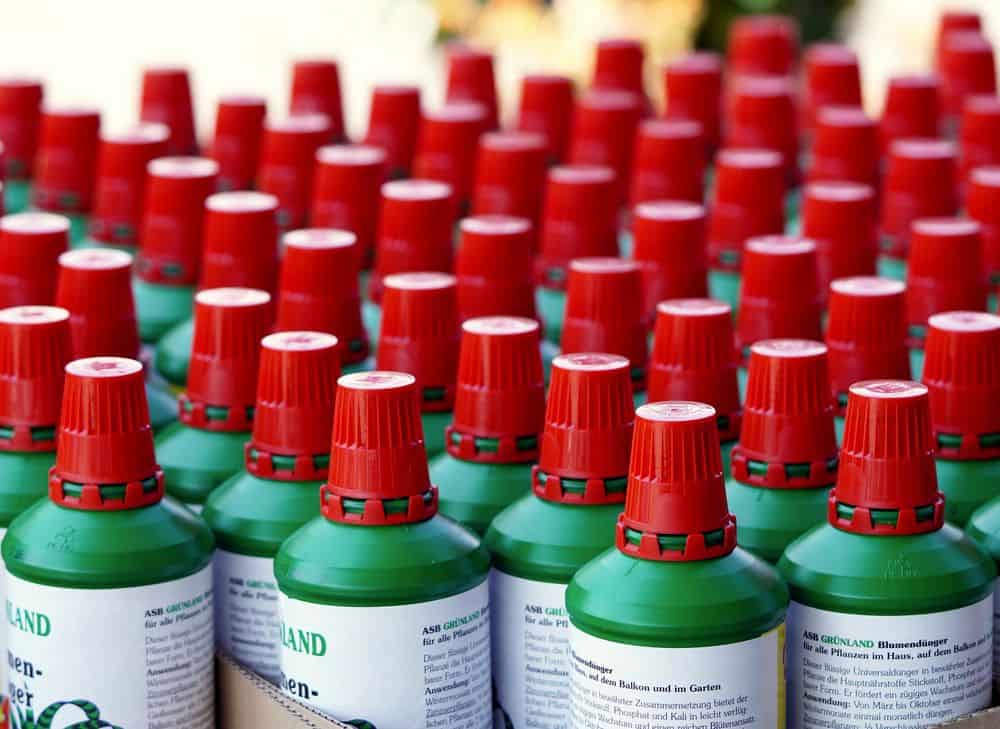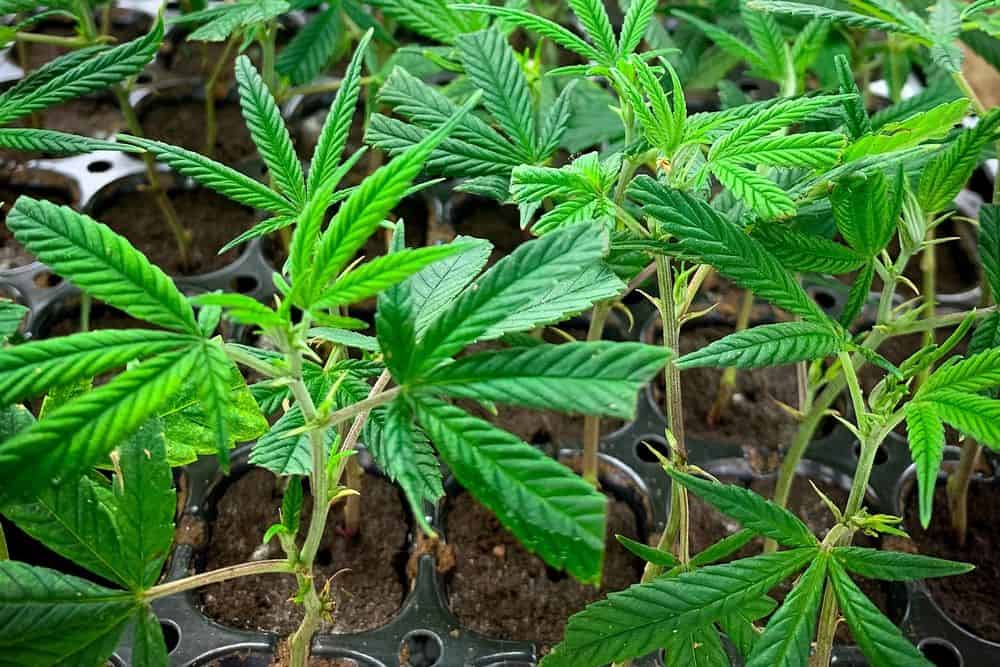 It’s one of the most frustrating things about growing cannabis.
It’s one of the most frustrating things about growing cannabis.
Or any plants, for that matter.
You can see by the appearance of the plants that something is wrong.
But what is the problem exactly?
It could be too many nutrients, or too few.
But it could also be nutrient lockout in cannabis plants, meaning you are giving your plants the nutrients they need, but they can’t absorb them.
How do you tell the difference? And what causes nutrient lockout, how do you prevent it, and how do you fix it if it has already happened?
We will answer these questions, and everything else you need to know about nutrient lockout in marijuana plants, below.
Contents
- 1 Understanding And Preventing Nutrient Lockout In Cannabis Plants
- 1.1 What Is Nutrient Lockout In Cannabis Exactly?
- 1.2 Nutrient Lockout Symptoms
- 1.3 What Causes Nutrient Lockout In Cannabis Plants?
- 1.4 What Causes Iron Lockout In Cannabis Plants & How To Prevent It
- 1.5 At What pH Does Calcium Lock Out?
- 1.6 How To Prevent Nutrient Lockout In Weed Plants
- 1.7 How To Fix Nutrient Lockout
- 2 Nutrient Lockout In Marijuana Plants: Final Thoughts
Understanding And Preventing Nutrient Lockout In Cannabis Plants
We will begin be reviewing what, exactly, nutrient lockout is, before getting into the symptoms, fixes, and ways to prevent it from occurring in the first place.
What Is Nutrient Lockout In Cannabis Exactly?

Nutrient lockout in cannabis occurs when the plant cannot access a nutrient or a group of nutrients. It can occur due to nutrition deficiencies, excessive fertilizer use, salt buildup, or pH imbalances.
Identifying nutrient deficiencies early on is crucial for maintaining your cannabis plant’s growth.
Nutrient Lockout Symptoms
Nutrient lockout symptoms in marijuana plants include yellowing or browning leaves, stunted growth, leaf curling, and spotting. Plants may show signs of nutrient deficiencies despite the presence of adequate nutrients in the soil.
Usually, the lower leaves are affected first, progressing to the upper leaves. These symptoms occur because the roots cannot absorb essential nutrients due to pH imbalances or excess salts.
Identifying these signs early helps prevent further damage and allows for timely corrective measures.
What Causes Nutrient Lockout In Cannabis Plants?
There are two main reasons that cause nutrient lockout.
pH Imbalances
Soil and water pH imbalances are the main cause of nutrient lockout in marijuana plants, because they prevent the plant from absorbing essential nutrients. The ideal pH range for cannabis is 6.0 to 7.0 when growing in soil and 5.5 to 6.5 for hydroponics.
The causes of such imbalances are over-fertilization, poor water quality, and inappropriate soil mixes. To avoid pH issues, regularly test and adjust pH levels using pH meters and buffers to ensure that the growing medium stays within the optimal range.
Excess Use of Fertilizers

Excessive use of fertilizers can also cause nutrient lockout in cannabis plants. Over-fertilization leads to a build-up of salts in the soil.
This build-up prevents the roots from absorbing essential nutrients. Your plants may start showing signs of nutrient deficiencies, such as yellowing or curling leaves, despite abundant nutrients.
What Causes Iron Lockout In Cannabis Plants & How To Prevent It
Several factors can cause iron lockout in cannabis plants:
- High pH level: When the pH level exceeds 7, iron can become unavailable for absorption by the roots. High pH levels are the main culprit in cannabis iron lockout, especially in growing mediums like soil and coco coir. In hydroponic systems, iron is usually more accessible, making deficiency rare.
- Stressful growing environments: Poor lighting, humidity, or temperature extremes cause stress in weed plants and can also contribute to iron lockout.
- Excessive fertilization: As explained earlier, too much fertilizer use can lead to a build-up of salts and minerals, further preventing iron uptake. Maintaining optimal pH levels and a balanced environment can help prevent iron lockout in cannabis plants.
At What pH Does Calcium Lock Out?
Calcium lockout occurs when the pH falls outside the optimal range of 6.0 to 7.0 for soil or 5.5 to 6.5 for hydroponics. At pH levels above 7.0, calcium becomes less available to plants, leading to deficiencies.
Calcium lockout can cause weak stem development, poor root growth, and increased susceptibility to diseases. Proper pH management is necessary to ensure calcium availability and support overall plant health and structural growth.
How To Prevent Nutrient Lockout In Weed Plants
You can easily prevent a nutrient lockout in cannabis plants with the following proactive steps:
Regular Soil And pH Monitoring

Regular soil and pH monitoring are important for preventing nutrient lockout. Cannabis plants thrive in specific pH ranges. These pH levels help the plants absorb nutrients efficiently.
For soil-grown plants, the ideal pH range is 6.0 to 7.0, while hydroponic systems require a pH of 5.5 to 6.5. Regularly test the pH levels of both soil and water using reliable pH meters or test kits. This is a good, and inexpensive, meter:
Adjust the pH as needed using pH up or down solutions to maintain the optimal range. This is a good set of pH up-down solutions:
Proper Fertilization
Adopt proper fertilization practices to prevent a nutrient lockout in your marijuana crop. Understand that over-fertilization does more harm than good, because it can lead to a build-up of salts and minerals in the soil. These block nutrient absorption, leading to deficiencies.
Always follow the recommended dosages on fertilizer labels and avoid over-applying nutrients. Also, use only those fertilizers that are specifically designed for cannabis to ensure balanced nutrient profiles.
It is important to adopt a regular soil flushing schedule to remove excess salts from the soil, prevent lockout, and promote healthy growth.
Use High-Quality Water And Soil
Always use high-quality water and soil to prevent nutrient lockout. Poor-quality water may contain impurities and salts that can accumulate in the soil and cause lockout. Use filtered or distilled water to minimize these risks.
Similarly, choose high-quality soil that offers good drainage and aeration, both of which are vital to prevent nutrient buildup. Look for soil mixes that are designed for cannabis cultivation to provide an optimal growing environment.
Use Organic Fertilizers And Supplements
The use of organic fertilizers and supplements can help prevent nutrient lockout by providing a more balanced nutrient release. Organic fertilizers also contain beneficial microorganisms that improve nutrient uptake and soil health.
Unlike synthetic fertilizers, they break down naturally, reducing the risk of salt accumulation.
Organic fertilizers also promote a healthy soil ecosystem, enhancing plant resilience and reducing the likelihood of nutrient lockout. Incorporate organic supplements into your feeding regimen to support overall plant health and nutrient absorption. Learn more about synthetic fertilizers vs organic ones here.
How To Fix Nutrient Lockout

If your plants are already suffering from nutrient lockout, all is not lost. Here is what you can do to fix the situation:
Understand The Importance of Diagnosing The Correct Nutrient Lockout
It is very important to diagnose the correct nutrient lockout. This will help you understand which specific nutrient is being locked out.
For this, start by considering the symptoms and testing the soil and water. Examine your cannabis plants for symptoms like yellowing leaves, stunted growth, or leaf curling.
These symptoms can resemble nutrient deficiencies, so make sure the issue is a lockout rather than just a lack of nutrients (if you are providing the necessary nutrients, then it is a lockout). This will help determine whether pH imbalances, excess fertilizers, or other factors are causing the lockout.
pH Test To Maintaining Soil And Water pH
Regularly test the pH levels of your soil and water to ensure they remain within the optimal range for cannabis growth. For soil, maintain a pH of 6.0 to 7.0; for hydroponics, aim for 5.5 to 6.5.
Adjust pH using pH up or down solutions as needed. Flush the soil with clean water to remove excess salts and fertilizers, allowing plants to resume normal nutrient absorption.
Flush The Soil
Soil flushing is a great solution for nutrient lockout recovery caused by a buildup of salts.
- First, stop feeding your plants any nutrients.
- Next, flush your plants with clean, pH-balanced water to remove excess salts and minerals. Flush your soil for several days before you start testing for pH.
- Ensure your growing system is fully saturated, allowing water to flow through the soil and drain thoroughly.
- Measure the electrical conductivity (EC) of the runoff to ensure that excess nutrients are being removed.
- After flushing, let the soil completely dry out before watering again. This helps prevent overwatering and root rot.
- Resume normal feeding after results show a pH of 5.5–6.5 in hydro or coco and 6.0–6.8 in soil. Water your plants normally for a while and continue monitoring plant recovery. Once plants show healthy growth, gradually reintroduce nutrients.
Nutrient Lockout Recovery Time

How long it takes to recover from a nutrient lockout can vary, depending on the severity of the issue and the corrective measures you take.
Generally, plants begin to show signs of recovery within a few days to a week after addressing the cause. This includes adjusting pH levels and flushing the soil to remove excess salts.
Full recovery can sometimes take one to two weeks, during which new growth should appear healthy. Continue monitoring your plants for full recovery.
Nutrient Lockout In Marijuana Plants: Final Thoughts
Preventing and addressing nutrient lockout in cannabis plants is essential for maintaining optimal growth and maximizing yields. By understanding the causes and recognizing the symptoms early, you can take proactive measures to ensure your plants remain healthy.
Regular monitoring of soil and water pH, proper fertilization practices, and the use of high-quality inputs are key strategies to prevent lockout.
If nutrient lockout does occur, prompt action through soil flushing and pH adjustments can help restore nutrient uptake and plant health. Consistent care and attention to these details will support robust cannabis cultivation and successful harvests. You should also check out my beginner’s guide to cannabis nutrients.


Leave a Reply